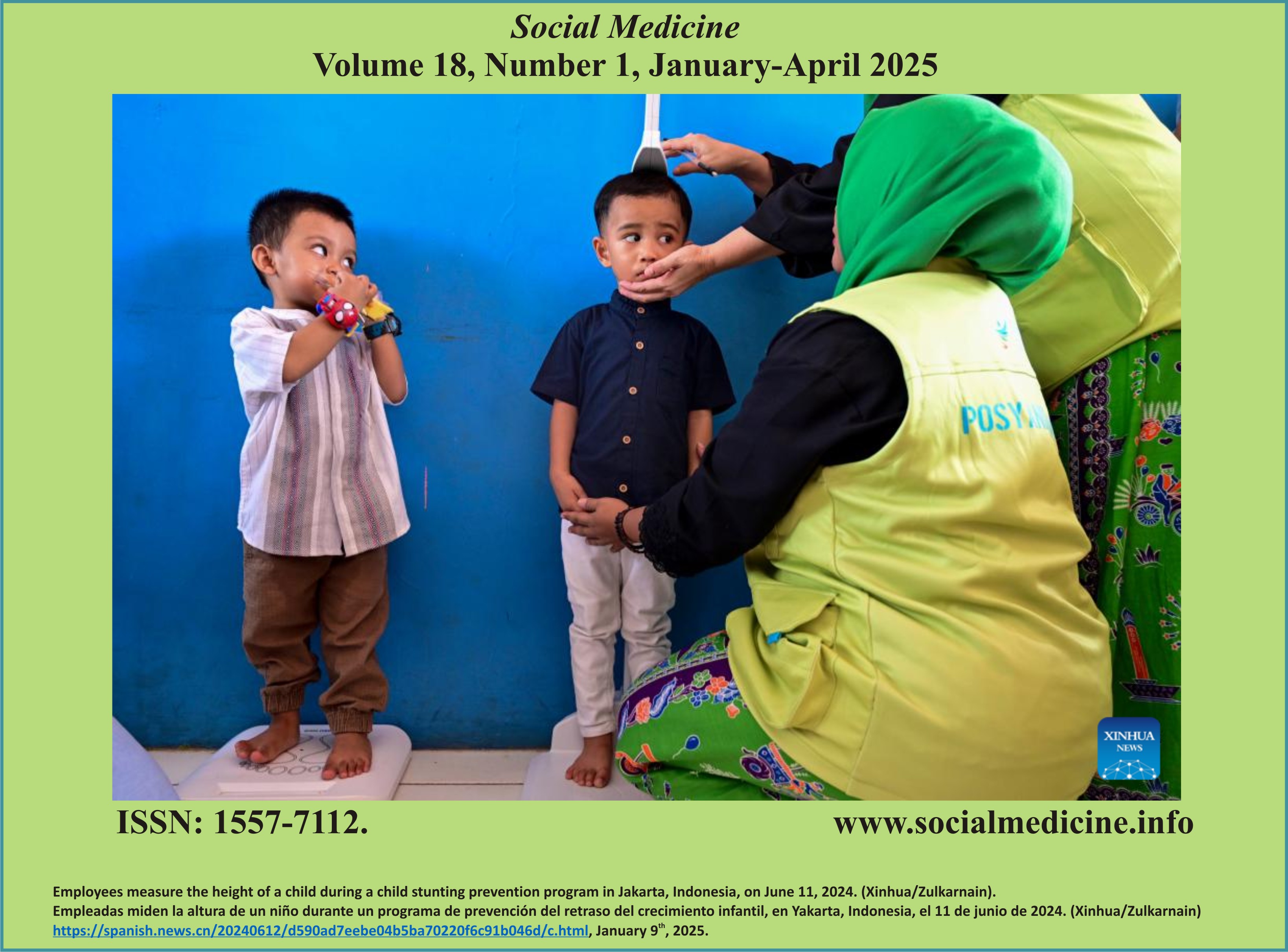Assessment of the Implementation of Anti-Bullying Policies in Universities in Delta State and Implications of Bullying on Health: A Mixed Method Study
DOI:
https://doi.org/10.71164/socialmedicine.v18i01.2025.1923Keywords:
Anti-bullying policies, Bullying, Delta State, Effectiveness, UniversitiesAbstract
In Nigerian schools, bullying is one form of violence that has put students' health and lives in grave danger. Emerging evidence has shown that anti-bullying laws and policies can be an effective tool in reducing bullying among school-aged youth.12 Study Objectives. This study examined: 1. The existing anti-bullying policies in universities in Delta State. 2. The perception of staff and students towards the implementation and effectiveness of the policies, and3.The health implications of bullying. The study was conducted in three selected universities in Delta State. This mixed-method study used a self-administered structured questionnaire for the quantitative aspect, a total of 600 questionnaires were distributed, and a total of 571 were satisfactorily answered and returned, i.e., a response rate of 95%. The in-depth interviews consisted of nine responders, using an interview guide for the qualitative aspect. The study populations were staff and students in Delta State universities. The most common health implications of bullying gathered from this study include: depression, self-isolation, academic setbacks, fear and anxiety, and many more. The respondents listed several anti-bullying policies, which may include: Reporting policies and punishments like expulsion, suspension, and so on. The quantitative study revealed a significant difference in the perception of students towards the effectiveness and implementation of these policies, compared to the perception of staff, from the qualitative research. While 23.3% of student participants (n = 133) thought the policies were ineffective, the largest percentage of participants (49.6% n = 286) could not determine the effectiveness of these policies. However, the staff believed that these policies were effective. According to Respondent 8, "The policies are very effective and properly implemented." And respondent 1, "Very effective and well implemented."
References
Cohn, A. and Canter, A. ‘Bullying Facts for Schools and Parents,’ National Association of School Psychologists. 2022. Available online: https://www.scirp.org/refer'ence/referencespapers?referenceid=1991481
U.S. Department of Health and Human Services. ‘Importance of anti-bullying laws,’ 2021. Available on: https://www.stopbullying.gov/resources/research-resources/importance-of-anti-bullying-laws
Aderibigbe Modareke. ‘A comparative study on the existence of anti-bullying policies in schools in Nigeria and the USA,’ 2012. Available from:https://www.semanticscholar.org/paper/A-comparative-analysis-of-bullying-laws-and-in-in-Aderibigbe/db9e46a53e0f7b2a8802856c4f40a3a0a8bbfd55
Xu, S., Ren, J., Li, F., Wang, L., & Wang, S. ‘School bullying among vocational school students in China: prevalence and associations with personal, relational, and school factors,’ Journal of Interpersonal Violence,’ 2022. 37(1-2), NP104-NP124. Available from: https://journals.sagepub.com/doi/full/10.1177/0886260520907360
Portnow, S., Downer, J.T., & Brown, J. ‘Reductions in aggressive behavior within the context of a universal, social-emotional learning program: Classroom-and student-level mechanisms,’ Journal of School Psychology. 2018, 68, 38-52. Available from: https://doi.org/10.1016/j.jsp.2017.12.004
Monique Hennink and Bonnie N. Kaiser. ‘principle of saturation,’ 2022 Available from: https://www.ncbi.nlm.nih.gov/pmc/articles/PMC5993836/#:~:text=Saturation%20means%20that%20no%20additional,that%20a%20category%20is%20saturated
Benjamin Saunders, Julius Sim, Tom Kingstone, Shula Baker, Jackie Waterfield, Bernadette Bartlam, Heather Burroughs, and Clare Jinks.
‘Saturation in qualitative research: exploring its conceptualization and operationalization,’ PubMed Central. 2018 Available from: https://www.ncbi.nlm.nih.gov/pmc/articles/PMC5993836/#:~:text=Saturation%20means%20that%20no%20additional,that%20a%20category%20is%20saturated
Federal Ministry of Health. ‘National Policy on School Safety,’ 2021. Available from: https://education.gov.ng/wp-content/uploads/2021/09/National-Policy-on-SSVFSN.
Joyce. J. Mboya and Daniel Onyango. ‘Effectiveness of schools in combating bullying behaviors,’ East African Journal of Education and Social Sciences. 2022 Available from: https://dx.doi.org/10.4314/eajess.v3i3.189
William Hall. ‘The Effectiveness of Policy Interventions for School Bullying: A Systematic Review,’ Research Gate DOI: 10.1086/690565. 2017. Available from: https://www.researchgate.net/publication/312962224
B. Mungala. ‘Relationship between Bullying Experiences, self-esteem, and Depression among secondary school pupils Department of Psychology,’ Medical Journal of Zambia. 2021. Available on: https://www.ajol.info/index.php/mjz/article/view
Udeme A., Chidi J. O., Ani E., Inyang A., Essien A., Ogban O. ‘Bullying Behavior and its Association with Mental Health Symptoms among Senior Secondary School Students in Calabar, Nigeria,’ Nigerian Journal Of Medicine, 2021. DOI: 10.4103/NJM.NJM_88_20 Available from: https://journals.lww.com/njom/Fulltext/2021/30020/Bullying_Behavior_and_its_Association_with_Mental.2
Department of Economic and Social Affairs. ‘Sustainable Development United Nations,’ 2015. Available from: https://sdgs.un.org/goals
Piper F. ‘academic bullies,’ The chronicle of higher education. 2008. Available on: https://www.researchgate.net/publication/234725713_Academic_Bullies
Ada M. J., Okoli G. O., Okoi O., Akeke M. N. G. ‘Prevalence, Causes and Effects of Bullying in Tertiary Institutions in Cross River State, Nigeria, ’Journal of Education and Practice. 2016 Vol.7, No.29. Available from: https://files.eric.ed.gov/fulltext/EJ1118880.
Downloads
Published
Issue
Section
License

This work is licensed under a Creative Commons Attribution-NonCommercial-NoDerivatives 4.0 International License.

